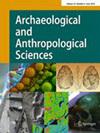In human osteoarchaeology, individual age-at-death is traditionally assigned by scoring characteristic expressions of specific traits and applying formulas or algorithms. However, it is well known that the resulting age estimates in target samples suffer from bias due to the effect of age-mimicry, both at the individual and at the population level. A general statistical methodology to obtain unbiased estimates of the age-at-death distribution in skeletal samples has been available for more than two decades. Even so, the procedure is rarely used. This may be related to the fact that this methodology requires external input which has selection of distributional characteristics to be reported. In this paper, we translate the general methodology into a clearly stated six-step procedure to be followed. We illustrate the six steps using an archaeological sample of 675 adult individuals and 15 scoring methods from traditional age-estimation procedures. By clearly identifying the actions that are necessary for its application we intend to make the approach more accessible for osteoarchaeologists while at the same time highlighting some challenges that need to be addressed in the future. Our study demonstrates that the approach is feasible and illustrates the absence of age-mimicry. A combined analysis of five informative traits allowed to obtain estimates of several characteristics of the target sample age distribution. However, its routine use will benefit from improved input from relevant reference samples and improved statistical software.



